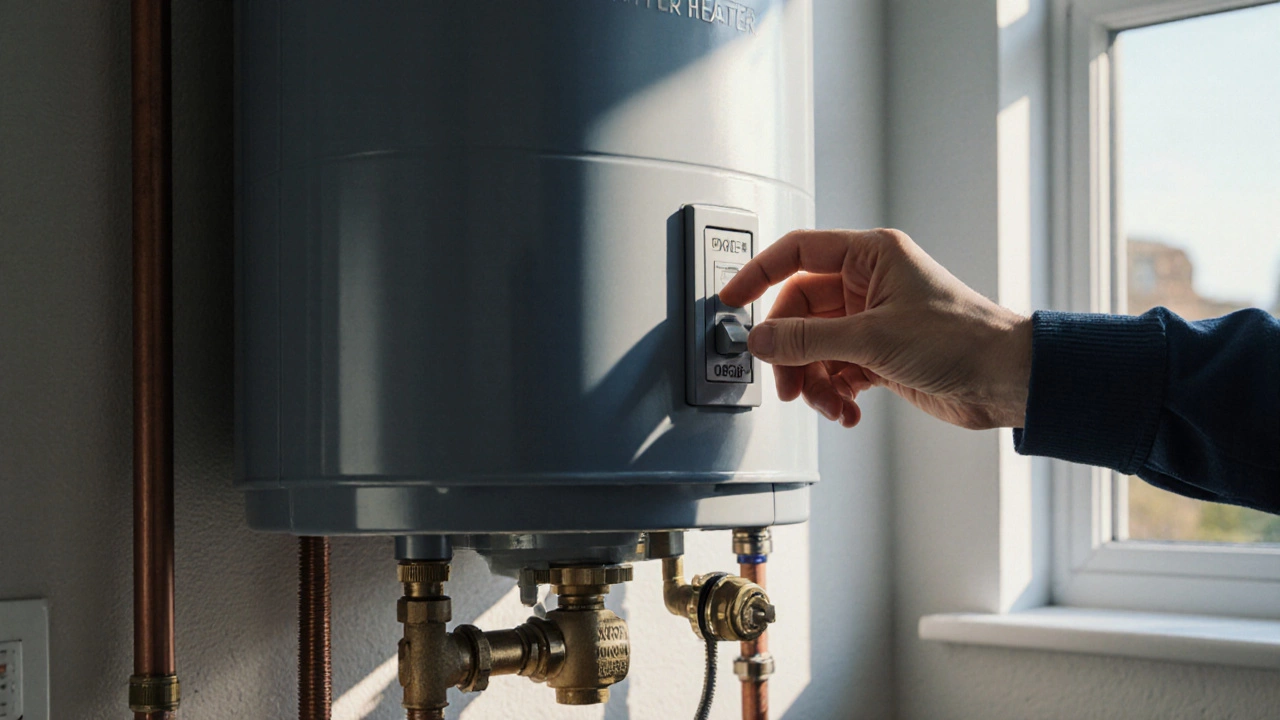
Learn the step‑by‑step checklist to diagnose a non‑working hot water heater, from safety shutdowns to key component tests, plus maintenance tips to prevent future failures.
When dealing with Water Heater Not Heating, a situation where the hot water supply fails to reach the desired temperature. Also called a cold water issue, it can leave you shivering in the shower. The broader water heater, the appliance that warms your domestic water relies on several components that can fail, and the reset button, a safety feature that shuts off power when excess temperature is detected is often the first thing people check. Understanding how these parts interact helps you decide whether a quick DIY fix will do or if you need a certified plumber.
A water heater that won’t heat typically points to a faulty heating element, a broken thermostat, or inadequate gas supply for a gas‑fed unit. For electric models, the element may be burnt out, while gas heaters might suffer from a clogged burner or a malfunctioning gas valve. These symptoms overlap with boiler, a system that provides both space heating and hot water in many homes problems, because both appliances share similar safety controls and venting requirements. If the vent is blocked, the system may trigger the reset button, cutting power to prevent overheating. A tripped reset button often means the appliance detected an unsafe condition, so popping it back in without fixing the root cause can be risky.
Another frequent culprit is sediment buildup inside the tank, which forces the heating element to work harder and can cause premature failure. Regular flushing extends the water heater lifespan, generally 8‑12 years for tank models and up to 20 years for tank‑less units. Ignoring maintenance not only reduces efficiency but also raises the chance of a complete shutdown, prompting that dreaded "not heating" message. Checking the pressure relief valve and ensuring proper water pressure are also vital – low pressure can stop the burner from igniting.
Safety should never be an afterthought. If you smell gas, hear clicking igniters that don’t spark, or notice water leaking around the unit, shut it off immediately and call a professional. Certified technicians are trained to handle gas connections, electrical components, and internal inspections safely. They can also verify that the appliance complies with local regulations, which is especially important for older models that may lack modern safety features.
Now that you know what to look for, you can quickly assess whether a simple reset, flushing, or part replacement will solve the problem, or if a specialist visit is the smarter route. Below you’ll find a curated set of articles that dive deeper into each of these areas, from detailed guides on using the reset button safely to comprehensive checklists for boiler‑related water‑heater issues. Browse the collection to find the exact fix you need and get your hot water back on track without the guesswork.

Learn the step‑by‑step checklist to diagnose a non‑working hot water heater, from safety shutdowns to key component tests, plus maintenance tips to prevent future failures.